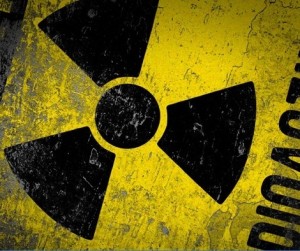With things heating up with the conflicts in Ukraine and with the pressure from the US and Europe a Russian general has called for Russia to revamp its military doctrine, the military doctrine was last updated back in 2010, to clearly identify the U.S. and NATO allies as Moscow's enemy number one and spell out the conditions under which Russia would launch a preemptive nuclear strike against the 28-member military alliance.
Source: The Moscow Times www.themoscowtimes.com/article/506370.html
Russia's military doctrine is a strategy document through which the government interprets military threats and crafts possible responses, is being revised in light of threats connected to the Arab Spring, the Syrian civil war and the conflict in Ukraine, the deputy chief of the Kremlin's security council told RIA Novosti on Tuesday.
But within the Defense Ministry there are voices calling for different priorities.
"First and foremost, the likely enemy of Russia should be clearly identified in this strategic document, something absent from the 2010 military doctrine. In my view, our primary enemy is the U.S. and the North Atlantic bloc," General Yury Yakubov, a senior Defense Ministry official.
The 2010 doctrine defines NATO expansion as a threat to Russian national security and reaffirms it's right to use nuclear weapons in a defensive posture, but stops far short of declaring NATO as Moscow's primary adversary and laying preemptive nuclear strike scenarios on the table, a posture unmistakably reminiscent of the Cold War.
Yakubov said the information war being waged over the crisis in Ukraine, where the West accuses Russia of arming separatists fighting the government in Kiev, and NATO's announcement that it would establish a permanent military presence in Eastern Europe have validated earlier fears that the alliance's claims of non-aggression toward Russia were insincere.
The general added that special attention should be paid to integrating the functions of the newly created Air and Space Defense Forces with Russia's land, sea and air based nuclear forces. "In addition, it is necessary to hash out the conditions under which Russia could carry out a preemptive strike with the Russian Strategic Rocket Forces," he said.
✈ Airplane Watch ✈ You might also like to read about Source: The Moscow Times www.themoscowtimes.com/article/506370.html
 |
| Tverskaya Central Moscow May 2014 - Photo By Vladmir Filonov |
But within the Defense Ministry there are voices calling for different priorities.
"First and foremost, the likely enemy of Russia should be clearly identified in this strategic document, something absent from the 2010 military doctrine. In my view, our primary enemy is the U.S. and the North Atlantic bloc," General Yury Yakubov, a senior Defense Ministry official.
The 2010 doctrine defines NATO expansion as a threat to Russian national security and reaffirms it's right to use nuclear weapons in a defensive posture, but stops far short of declaring NATO as Moscow's primary adversary and laying preemptive nuclear strike scenarios on the table, a posture unmistakably reminiscent of the Cold War.
Yakubov said the information war being waged over the crisis in Ukraine, where the West accuses Russia of arming separatists fighting the government in Kiev, and NATO's announcement that it would establish a permanent military presence in Eastern Europe have validated earlier fears that the alliance's claims of non-aggression toward Russia were insincere.
The general added that special attention should be paid to integrating the functions of the newly created Air and Space Defense Forces with Russia's land, sea and air based nuclear forces. "In addition, it is necessary to hash out the conditions under which Russia could carry out a preemptive strike with the Russian Strategic Rocket Forces," he said.
 |
| ✈ B-2 Spirit Stealth Strategic Bombers Land at RAF Fairford UK ✈ |
✈ Airplane Watch ✈ Or like to read about
 |
| Electronic military war game exercises disrupting jamming air-traffic control radar |








No comments:
Post a Comment